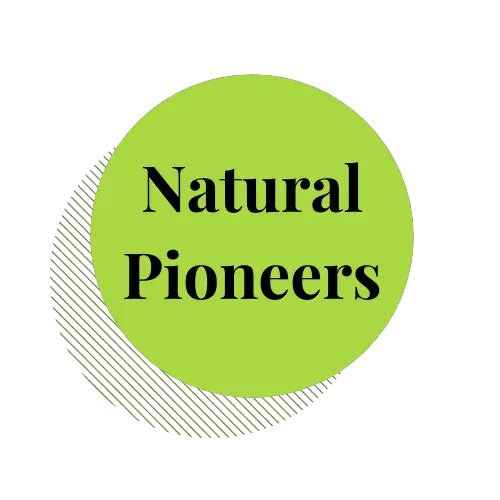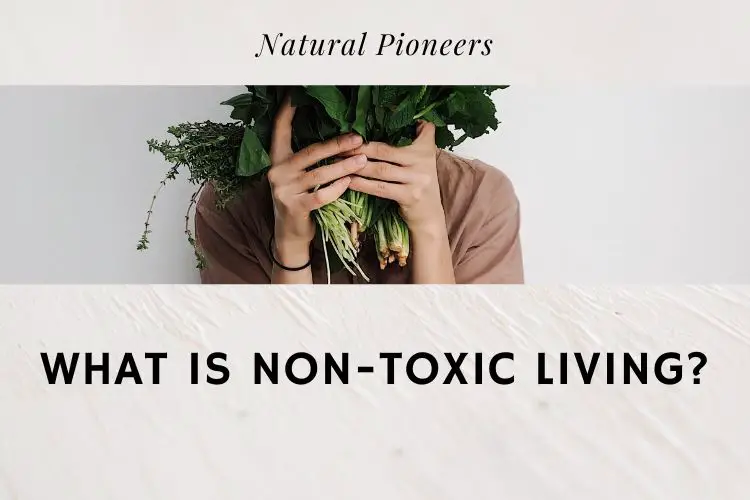
What does non-toxic even mean and where am I exposed to toxins ? We have quite some toxins to cover which you are likely exposed to in your environment. We’ll dive into food, water, cooking, personal care & cosmetic products, fragrances, cleaning supplies, laundry detergents, mattresses, supplements, air quality, footwear, and pest control.
Non-toxic living aims to minimize toxic chemical exposure in all areas of life. This includes but is not limited to conscious food & water choices, toxin-free cosmetics, personal care products, mattresses, clothing, and footwear. Studies confirm the health benefits of reduced toxic exposure.
Let’s start with food as one of the more obvious areas to start with when making the switch to non-toxic living.
Step 1: Eat Clean, Non-Toxic Food
When it comes to eliminating toxic chemicals in our homes, it’s a good idea to start with what you put in your mouth. You probably won’t be surprised to hear that organic food, ideally without a plastic wrapping (think farmers market) is ideal. Studies show that those who eat more organic produce, dairy, meat and other products have 25 percent fewer cancer diagnoses over all (especially lymphoma and breast cancer). [1]
I feel like a Debby Downer to say this, but try to limit eating out as much as possible. We’ll give you some valuable tips about cooking at home soon. Next to organic foods, it’s crucial to clean out processed foods along with sugars from your house. Give organic stevia a try instead! And while you’re at it, it’s a good idea to clean out your cooking oils along with it. Stick with extra virgin olive oil for salads and raw coconut oil for frying, both in organic quality. That’s all a health-conscious at-home cook really needs.
The Take-Away: Eliminating toxic chemicals includes processed foods, vegetable oils, and addictive substances like sugar. Stick with fresh, organic produce from your local farmers market, use stevia as your sweetener, and limit your oils to coconut oil and extra virgin olive oil.
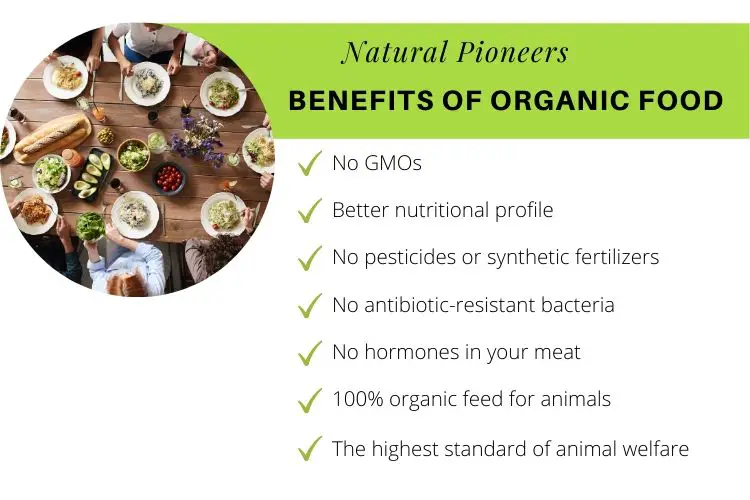
>> Learn more about organic chicken or organic eggs
Step 2: Drink Clean, Nutritious Water
Health conscious people understand the value of clean, nutritious, and chemical-free water. There are a couple of aspects to consider. First of all, you want to look for “spring water” when you grab water at a store. Don’t get side-tracked by “purified”, “distilled”, “remineralized”, “artesian”, “flavored”, or “nutrient-enriched” claims on the bottle. Spring water is your best choice. It contains a significant amount of naturally occurring minerals like calcium and magnesium. Numerous studies confirm health benefits from sufficient calcium and magnesium intake. [2]; [3]; [4]; [5]; [6]; [7]; [8]; [9]
Since filtered tap water is empty with zero nutrients left, it is not a good choice for drinking water. Tap water itself should not be considered either. The EWG concluded that when drinking one glass of tap water, you’re also getting a dose of industrial or agricultural contaminants linked to cancer, harm the brain and nervous system, changes in the growth and development of the fetus, fertility problems and/or hormone disruption. [10]
Second, if it fits your budget, get spring water delivered in glass bottles. Plastic comes with much more toxins than just BPA. Plastic bottles are a common endocrine disruptor. That means plastic bottles and their residue in water interferes with our hormone system. Especially PET bottles should be avoided as they show high estrogenic activity. [11] Once you have the right kind of water in your home, make sure you use it to make coffee, tea, and for cooking. Anything that goes into your and your family’s mouth should be prepared with non-toxic, nutritious water.
The Take-Away: The majority of your water intake should come from spring water in glass bottles. Water delivery is a convenient way to keep your house stocked with mineral-rich and natural spring water. If you’re out of the house and didn’t take water with you (we recommend stainless steel water bottles), get a bottle of spring water from the store, some stores now offer bottled water in glass.
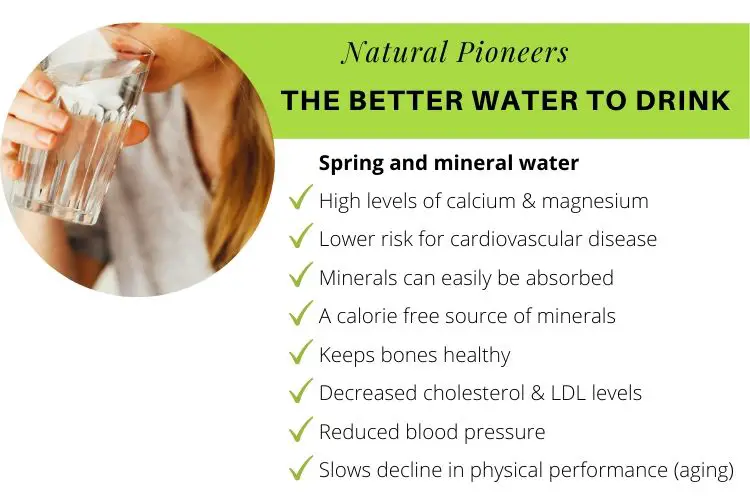
>> Learn more about spring & mineral water
Step 3: Start Cooking At Home
“Noone is born a great cook. One learns by doing.”
Julia Child, American cooking teacher, author, and television personality
The more you prepare your food at home, the more you are in control of what it is made of. In my family, we make smoothies or oatmeal for breakfast, prepare salads or wraps for lunch, and at night, we often fire up the grill to make some fish, veggies & potatoes. All made with fresh organic meats and produce. It took me a long time to convert my husband from eating Pho noodle soup 3 times a day to making food at home. And while we still love and enjoy going out once a week, I know that nothing beats the value for money when cooking organic foods at home.
Two important factors to consider when cooking at home, is to use non-toxic appliances & boxes to store food. Almost all coated pans have a non-stick coating that is made of plastic. The problem? At temperatures above 530° F, toxic gases dissolve and ultimately end up in your food. [12] Studies have linked these toxins to infertility, cancer and even death. [13], [14], [15] That is why we only use stainless steel pots and cast iron pans.
As far as boxes are concerned, I highly recommend you get rid of all your Tupperware. Use glass boxes or chic stainless steel containers to store your left-overs. And don’t forget to get rid of cooking spoons made of plastic (silicone is considered safe). We primarily use wooden spoons and some stainless steel ones.
The Take-Away: When cooking at home, use non-toxic appliances like stainless pots and cast iron pans as well as spoons made of wood or stainless steel. For storing boxes, opt for glass or stainless steel.
Step 4: Eliminate Toxic Beauty Products
Many people have started to question whether the ingredients in their products are safe and non-toxic. Remember, the skin is our largest organ and many synthetic ingredients can be absorbed through our skin. When I first collected studies on shampoo, conditioner, soap, dish soap, and cosmetics, I was stunned. Especially the US market is heavily impacted: As a comparison, the US bans 11 ingredients from shampoos, Canada bans 587, and the EU bans 1328. [16] And shampoo is only one out of hundreds of toxic products that we keep in our homes. Up for a cleanup?
A good resource to start is our Beauty Category where we write about chemicals in personal care and cosmetic products. Here’s how I personally go about it: Before I made the switch to non-toxic products, I thoroughly researched the EWG Database for clean alternatives. Once I found what I was looking for, I filled my cart online and send in a pretty big order. I was so happy when the products arrived and felt so good about emptying our shelves in the bathroom and replacing everything with natural, non-toxic alternatives. To this day, I love getting ready in the morning, knowing that all my products are safe and just as good (some are even better!) as regular drugstore brands.
The Take-Away: Our cosmetic & personal care products are heavily loaded with toxic chemicals that can be absorbed through our skin. While the European Union and Canada are very strict in regard to what can be put into products, the US has relatively few rules for manufacturers. The ideal approach is to check your current products, find non-toxic alternatives (Resources & EWG Skin Deep), and get rid of the bad stuff in your house.
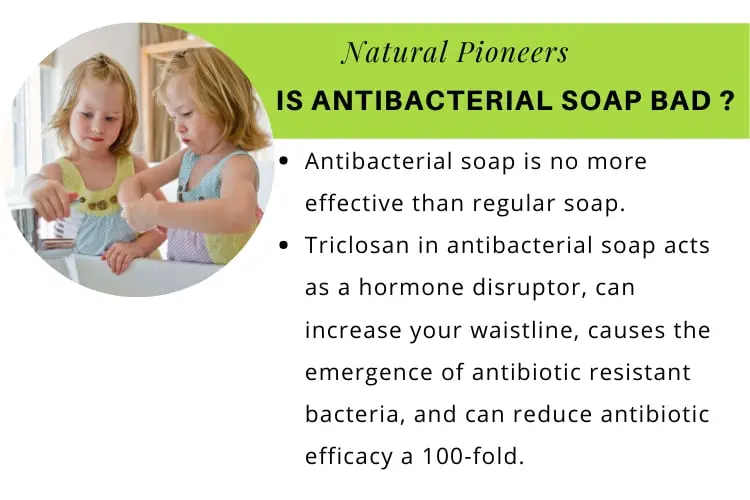
>> Learn more about antibacterial hand soap
Step 5: Look Out For Toxic Fragrances
While you’re in the process of switching your cosmetics & personal care products, watch out for other products in your house that contain fragrances. When you see “fragrance” or “parfum” on the ingredients list, they really mean phthaltes. Phthaltes disrupt our hormones and can harm our reproductive system. In children, they can disturb normal development. [17], [18], [19] Look out for room refreshers & plug-ins, candles, carpet refreshers, toys, crafts, including vinyl products such as backpacks, and plastic notebook binders.
The Take-Away: Fragrances and parfums contain phthaltes which disrupt our hormones, harm our reproductive system, and can disturb normal development in children. Non-toxic living allows for essential oils as fragrance as well as safe perfumes.
Step 6: Renew Your Cleaning Supplies
We’ve already talked about personal care & cosmetic products. Sadly, cleaning products contain even more harsh and harmful chemicals. However, safe & non-toxic cleaning supplies are definitely on the rise and it is has become easier to find them. A word of caution: Don’t buy into “green and natural looking” labels. Even some eco-friendly brands contain bad stuff. I personally recommend to stick one trusted brand for all your supplies. Attitude, Branch Basics, and Sonett are great brands to start with. All 3 have a wide range of cleaning supplies.
The Take-Away: Cleaning supplies contain harmful toxins. The ideal approach to a non-toxic household is to remove all the bad stuff and stock up on products from trusted brands. If you have someone come to clean your house, make sure their products aren’t packed with toxins.
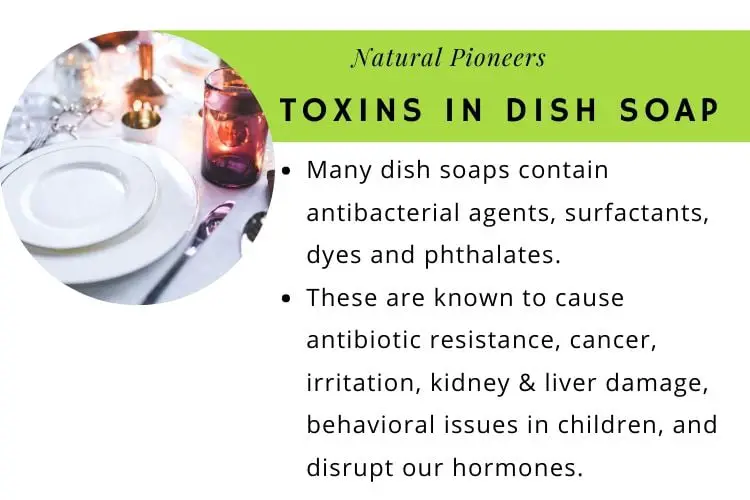
>> Learn more about natural dish soap
Step 7: Check Your Laundry Detergent
Can laundry detergent be that bad? You think the water cycle will wash all the detergent off to leave your clothes clean & toxin-free? Think again. Most likely, your clothes have a nice smell once they are washed and dried, right? If you use regular laundry detergent, that’s phthaltes who do the trick. Phthaltes disrupt our hormones and can harm our reproductive system. In children, they can disturb normal development. [20], [21], [22]
Detergent is formulated to keep phthaltes on your clothes even after washing – for that extra fresh scent. And we keep inhaling them throughout the day and even at night through our freshly washed bedding. The same goes with fabric softener and dryer sheets. It’s best to get rid of them all together.
What should you use? A non-toxic detergent. And no worries, they can be made with essential oils and non-toxic fragrances that smell just as nice, perhaps even better. You can find a non-toxic laundry detergent in your local health food store. I personally use Sonett, it’s a German brand that my mom used when I grew up. Other fantastic options are Better Life, Eco Me, Molly’s Suds, and MamaSuds.
The Take-Away: Laundry detergent is formulated to keep toxic fragrances on our clothes after washing. They can do severe harm to our health and are especially toxic for children. Non-toxic living includes using a safe detergent and eliminating fabric softeners and dryer sheets.
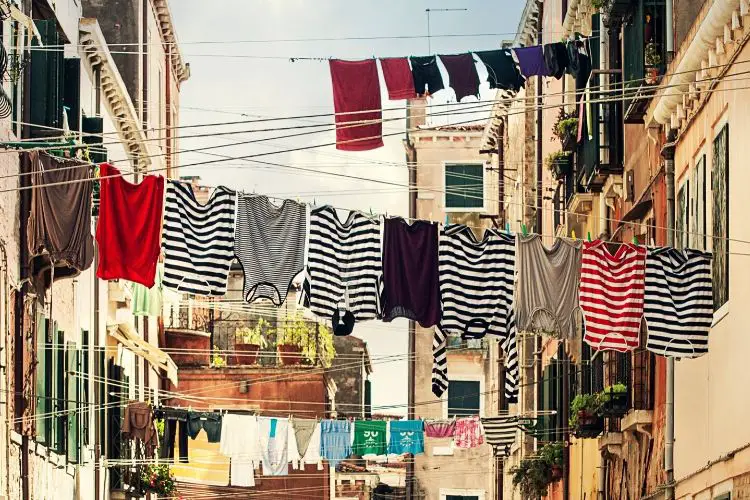
>> Learn more about the difference between face wash & a cleanser
Step 8: Sleep On A Non-Toxic Mattress
According to research, most mattresses on the market are full of chemicals that can pollute your bedroom air and harm your health. Unfortunately, as the foam in your mattress degrades, more toxins are released. Hence, mattresses are never truly off-gassed.
Chemicals include polyurethane foam, VOCs, flame retardant chemicals, and PVC or vinyl covers. These chemicals can emit volatile organic compounds, damage reproductive systems in kids, cause respiratory irritation, are linked to cancer, hormone disruption & adverse effects on the immune system. [23]
You want safe, non-toxic mattresses for you and your family? Here’s what to look for: No less than 95% certified organic content, no polyurethane foam, no added chemical flame retardants, low-VOC certification, no added fragrances or antimicrobials, no PVC or vinyl. [24]
While you’re in the process of changing your bedding, you might consider getting rid of your foam pillow, which is likely made of polyurethane. Polyurethane contains VOCs, causing immediate health effects like headaches, eye, nose and throat irritation, loss of coordination, asthma exacerbation and nausea. Possible longer-term effects include liver, kidney, and central nervous system damage, and cancer. [25] It’s a long list of chemicals and things to avoid, I know. Mattress brands that meet all safety-requirements for non-toxic living include Soaring Heart, Naturepedic, and Avocado.
The Take-Away: We spend one third of our lives sleeping, that is on average 26 years. Throughout that time you have the choice to sleep on a safe mattress or on one that emits toxic fumes. Mattresses and pillows with foam (made from polyurethane) are never off-gassed, as they emit more toxins as the foam degrades. A safe, non-toxic mattress will last you a long time, for restful & healthy sleep.
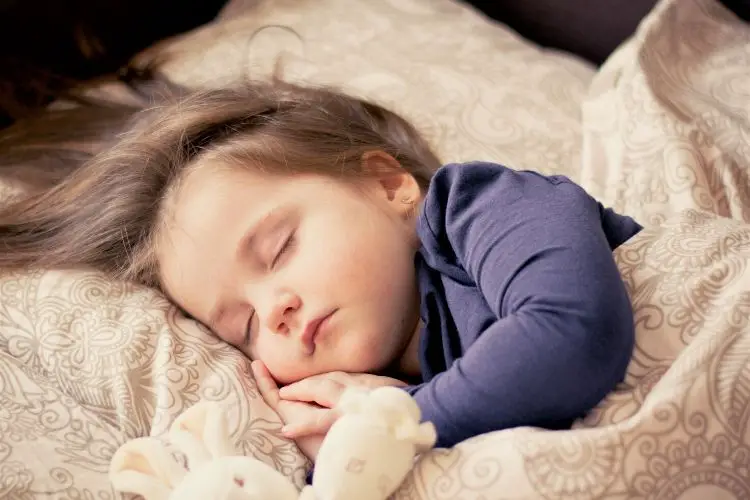
>> Learn more about the benefits of hot baths for restful sleep
Step 9: Replace Your Shower Curtain
If you use a regular plastic shower curtain, it’s time to replace it. Studies show that PVC shower curtains release over 100 chemicals into the air. These chemicals can cause eye, nose, and throat irritation, headaches, loss of coordination, nausea, and damage to the liver, kidney, and the central nervous system. Some can cause cancer in animals and some are suspected or known to cause cancer in humans. [26]
Making the switch is easy. Look for a safe, non-toxic curtain. I have used this clear shower curtain. If you are looking for a natural fabric, a hemp shower curtain is ideal.
The Take-Away: PVC shower curtains release over 100 chemicals into the air, some of which are known to cause cancer. Choose a non-toxic plastic curtain or curtains made from natural fabrics like hemp to stop inhaling chemical fumes each time you shower.
Step 10: Install A Shower Filter
We love our shower filter! I was appalled when I first moved in with my now husband and saw him taking a shower that really smelled like a chlorine steam bath. Yuk! We installed a shower filter the week after and now shower with clean water that doesn’t carry a chemical smell. They last pretty long and only need to have their filter changed after a certain period of time. Shower filters are affordable, effective, and easy to install (even for me).
The Take-Away: Taking a steamy hot shower with tap water has us inhale lots of chemicals, plus they get in touch with our largest organ – our skin! Installing a shower filter is easy, affordable, effective, and will get rid of any nasty chemicals in your water.

>> Learn more about how natural shampoo nourishes your hair
Step 11: Reconsider Your Supplement Intake
Did you know that the United States spends the most per capita on prescription drugs when compared with other high-income countries? I mean you gotta take some sort of pill, right? 77% of US adults take dietary supplements. [27] Chances are, you’re one of them. Multivitamins, fish oil, vitamin D, vitamin B, calcium, magnesium, probiotics, iron, and vitamin E are some of the most popular ones and consumed by 3 out of 4 adults. [28] Wow!
We won’t argue with doctors who prescribe these pills, but have you ever considered just getting these vitamins from a balanced organic diet? From smoothies, stir-fries, salads, grilled and steamed veggies, veggie soups or home-made wraps?
If we take look at Bloomberg’s Healthiest Country Index, Spain is the clean winner (health grade: 92.8) followed by many other European countries and Japan. The US lags far behind on place 35 (health grade: 73.02). [29] Here’s the interesting part: while 77% of Americans take dietary supplements, only 5.9% of men and 12.1% of women in Spain take any supplements. [30] Could it be that a healthy lifestyle, including cooking at home with your family can do much more for your health than any pill ever will? I’ll leave the answer up to you.
At this point, it’s time for a disclaimer: You should always discuss your personal situation with your doctor before making any changes.
The Take-Away: Preparing well-balanced organic foods at home may provide you with all the vitamins & minerals you need. In Spain, the healthiest country in 2019, less than 10% of the population take supplements. Talk with your doctor before making any changes to dietary supplements that you currently consume.
Step 12: Improve Your Air Quality
The quality of your air at home is important. Generally, you’ll find that most people who are into non-toxic living love to be outdoors. Out in nature, away from all the pollution, that’s where you find the best air quality. The American Lung Association found that 45.8% of Americans live in counties with unhealthy ozone or particle pollution. [31]
“We are all waking up to the fact that air pollution and its impact on human health and the health of our planet is the defining issue of our time. Air pollution is responsible for one in every nine deaths each year and this could be intensified by projected population growth.” [32]
Professor Prashant Kumar, Founding Director of GCARE at the University of Surrey
While many of you probably won’t consider moving to an environment with better air quality, you can take steps to improve the air quality in your home. If your home is air-conditioned, you should know that air conditioning is associated with increases in acute health symptoms often called sick building syndrome (SBS) symptoms, and also with asthma symptoms. [33]
The Environmental Protection Agency states that the most effective way to improve indoor air quality is to eliminate individual sources of pollution or to reduce their emissions. That means seal or enclose sources that contain asbestos, get your gas stove adjusted, and increase ventilation.
Open up your windows! Another approach is to increase the amount of outdoor air coming indoors. If you’re thinking about getting an air cleaning device, be aware that the EPA does not recommend using air cleaners as their effectiveness is uncertain. They only partially remove the radon decay products and do not diminish the amount of pollutants entering the home. [34]
The Take-Away: 45.8 %of American live in counties with unhealthy ozone or particle pollution. There are 2 ways in which you can limit your toxic exposure. First, spend as much time outdoors in nature as you can. Oxygen-rich, unpolluted air is what keeps our lungs healthy. Second, get a professional to seal or enclose sources that contain asbestos, get your gas stove adjusted, and increase ventilation. Opening up your windows regularly can limit sick building syndrome (SBS) symptoms and asthma symptoms commonly associtated with air conditioning.

>> Learn more about healthy & natural protein powders
Step 13: Wear The Right Footwear
Do your shoes have a funny rubber smell? Washington’s Department of Ecology found toxic chemicals in more than 200 children’s products, including clothing and shoes. They tested products distributed by retailers to see if their products are in compliance with the law.
The most shocking result was for a pair of baby shoes with orange soles and little brown plastic straps. The orange soles were tested at a whopping 44 percent phthalates! [35] In the case of phthalates, you should know that absorption through skin is as significant as inhalation! [36] As a reminder, phthaltes disrupt our hormones and can harm our reproductive system. In children, they can disturb normal development. [37], [38], [39] This is one of the reasons why OEKOTEST, a German consumer agency advices parents to have their kids wear socks in sandals.
The next time you buy shoes, try one of these sustainable brands or give barefoot shoes like Vivobarefoot, Merrell, or Vibram a try. Barefoot shoes engage a wider range of muscles, strengthen the foot, and help prevent deformities.
The Take-Away: Many shoe brands are heavily loaded with phthaltes. Phthaltes disrupt our hormones and can harm our reproductive system. In children, they can disturb normal development. Next time you shop for shoes, look for sustainable brands with minimal rubber or try some of our suggested options above.
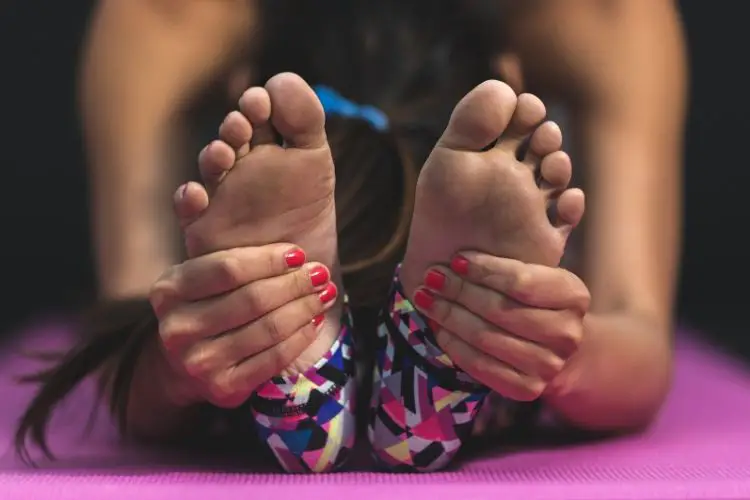
>> Learn more about the difference between detangler & leave-in conditioner
Step 14: Eliminate Pest Control Substances
Do you spray for bugs or have someone come spray your house regularly? While we certainly don’t want bugs, insect eggs, ants, and cockroaches in our homes, these sprays contain numerous toxins.
Pesticides can enter your body by consuming food that was exposed to a pesticide (aka spraying in your kitchen), have skin contact with pesticides, or inhaling pesticide vapors. [40]
Chronic poisoning due to exposure in your house may include muscle weakness, fatigue, difficulty concentrating and remembering things, and generally feeling unwell. [41] We recommend using preventative methods and keeping your house clean, clutter-free. Learn about a pest you have and options to control them. [42]
The Take-Away: Non-toxic living refrains from the use of indoor pest control. Using preventative methods and keeping your house clean and clutter-free does the trick for most people. If you still struggle with bugs and insects inside, learn about your pest and options to control it in a safe, non-toxic manner.
